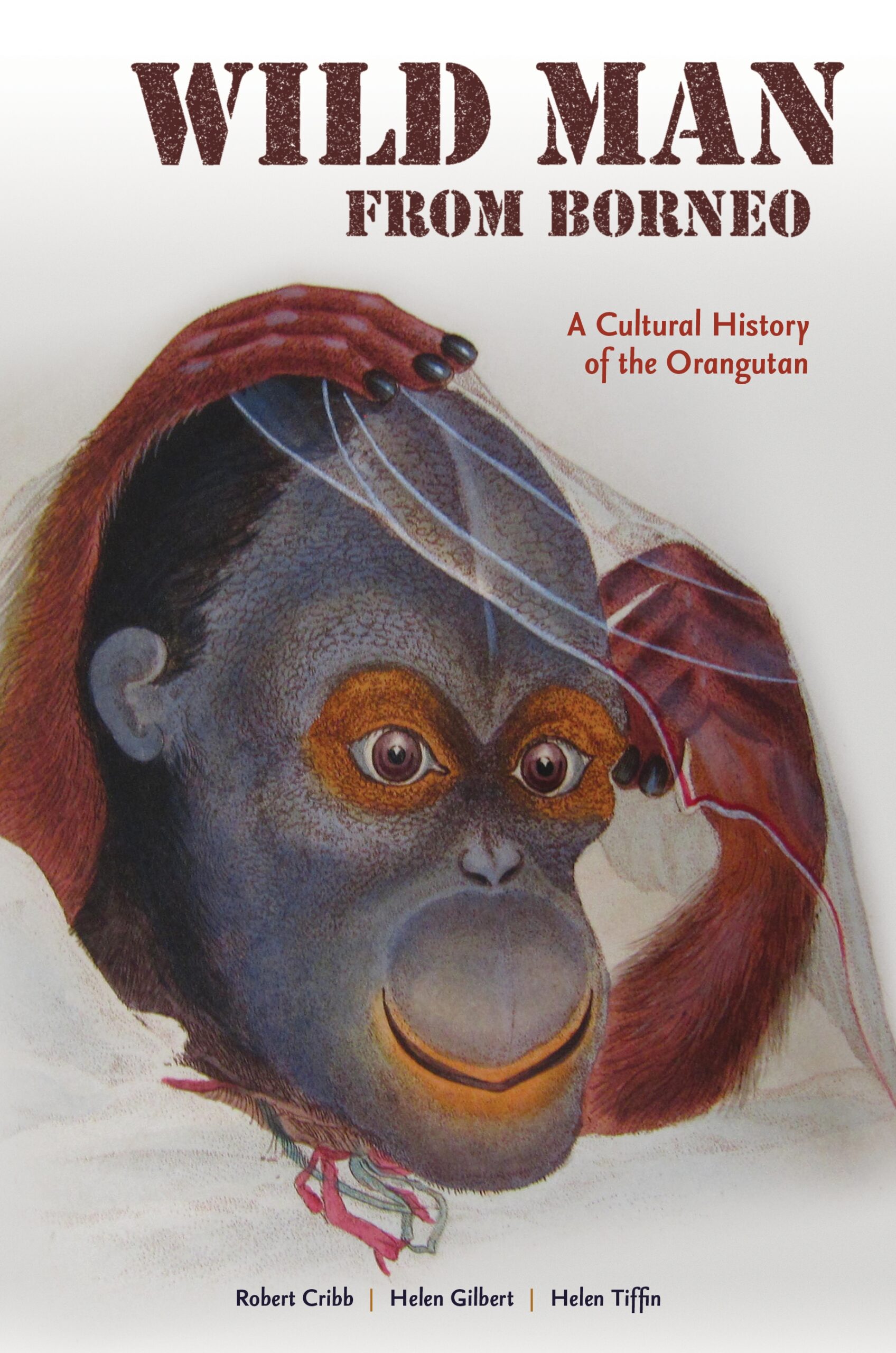Wild Man from Borneo: A Cultural History of the Orangutan
- About the Book
-
Wild Man from Borneo offers the first comprehensive history of the human-orangutan encounter. Arguably the most humanlike of all the great apes, particularly in intelligence and behavior, the orangutan has been cherished, used, and abused ever since it was first brought to the attention of Europeans in the seventeenth century. The red ape has engaged the interest of scientists, philosophers, artists, and the public at large in a bewildering array of guises that have by no means been exclusively zoological or ecological. One reason for such a long-term engagement with a being found only on the islands of Borneo and Sumatra is that, like its fellow great apes, the orangutan stands on that most uncomfortable dividing line between human and animal, existing, for us, on what has been called “the dangerous edge of the garden of nature.”
Beginning with the scientific discovery of the red ape more than three hundred years ago, this work goes on to examine the ways in which its human attributes have been both recognized and denied in science, philosophy, travel literature, popular science, literature, theatre, museums, and film. The authors offer a provocative analysis of the origin of the name “orangutan,” trace how the ape has been recruited to arguments on topics as diverse as slavery and rape, and outline the history of attempts to save the animal from extinction. Today, while human populations increase exponentially, that of the orangutan is in dangerous decline. The remaining “wild men of Borneo” are under increasing threat from mining interests, logging, human population expansion, and the widespread destruction of forests. The authors hope that this history will, by adding to our knowledge of this fascinating being, assist in some small way in their preservation.
- About the Author(s)
-
Robert Cribb, Author
Robert Cribb is emeritus professor of Asian history at the Australian National University and lives in Canberra.Helen Gilbert, Author
Helen Tiffin, Author
- Reviews and Endorsements
-
- Wild Man from Borneo is an illuminating and revealing study, which will appeal to general readers as well as specialists. Over 50 illustrations complement the authors’ elegant and detailed written account. In view of the orangutan’s precarious condition today, the book also contains an urgent message that the disappearance of the ‘wild man’ from the wild would be a tragedy not only for the orangutan but for humanity as well.
—New Books in Southeast Asian Studies - Professors of Asian history, theatre and postcolonial and studies respectively, Cribb, Gilbert and Tiffin have collaborated to produce a sweeping account of wild and captive orang-utans in the scientific, artistic and popular imagination. . . . The book’s main strength lies in its well-researched details about the orang-utan’s place in cultural traditions as seen through works of biology, zoology, psychology and anthropology, as well as through literature, drama and film. . . . The details and comparative interpretations offered are in some ways impressive.
—Times Literary Supplement - Wild Man from Borneo is an illuminating and revealing study, which will appeal to general readers as well as specialists.
—New Books in Southeast Asian Studies - In its detailed attention to changing Western views, the book is certainly comprehensive. . . . The book’s greatest value is its exhaustive demonstration of how Western representations of the ape have alternated between a view of the orangutan as a very humanlike and a definitely non-human creature, a mere animal among other animals.
—Bijdragen tot de Taal-, Land- en Volkenkunde - In their book, Wild Man from Borneo: Cultural History of the Orangutan, the authors Cribb, Gilbert, and Tiffin provide a thorough history of the orangutan as not only a nonhuman animal, but a cultural subject that is orchestrated and performative, reflecting the social and political history of the United States and many European nations. . . . this book serves as an important reminder of the responsibility now mandated for the orangutan which must be achieved through universal support, but provides important context for responsibility being historically relative and is a principle not universally held due to these historical differences.
—Anthrozoös The book documents the history of the importation and keeping of orangutan specimens in
Europe, for the purposes both of science and of entertainment. It looks at attitudes to the process
of killing animals who were generally portrayed, in their forest homes, as savage and dangerous;
and it explores how the ways in which orangutans were treated and displayed once they reached
Europe – which often mimicked human ways and manners – reflected the continuing toying with
the possibility that orangutans were some kind of ‘primitive’ human.
—ASEASUK News- The great strength of this book lies in its historical analysis and it provides a detailed, insightful, and entertaining exploration of our ever-shifting relationship with our close cousins.
—Australian Book Review - This joint-authored, multidisciplinary study offers a wonderful introduction to the promise and challenge of investigating human-animal histories.
—American Historical Review
- Wild Man from Borneo is an illuminating and revealing study, which will appeal to general readers as well as specialists. Over 50 illustrations complement the authors’ elegant and detailed written account. In view of the orangutan’s precarious condition today, the book also contains an urgent message that the disappearance of the ‘wild man’ from the wild would be a tragedy not only for the orangutan but for humanity as well.
- Supporting Resources
-





